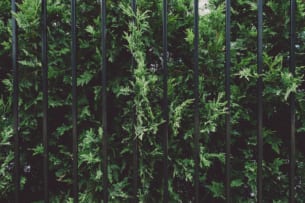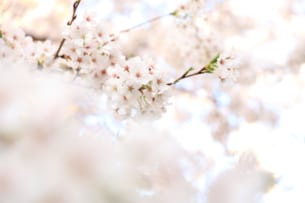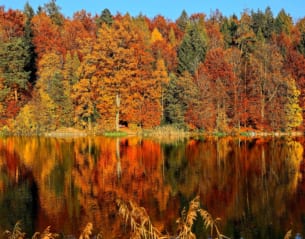Cherry Blossom and Full Bloom Forecast for 2024 (Part 3)
Cherry Blossom Rush Imminent, with Tokyo Expected to Bloom on the 24th
Press Release
Japan Weather Association (JWA) released its part 3 forecast for cherry blossoms and full bloom in 83 locations throughout Japan on March 19, 2024.
Trend of blossoming and full bloom
As March began, temperatures remained lower than usual nationwide until mid-March. However, this past weekend saw temperatures rising, with highs exceeding 20°C in central Tokyo on both Saturday and Sunday, marking a spring-like atmosphere in many places.
Moving forward, around March 22nd, temperatures are expected to drop due to the influence of cold air, remaining lower than normal. Afterwards, temperatures are expected to be higher than usual until the end of March in many areas. Considering the return of the cold around March 22nd, compared to the previous forecast last week, the forecast dates have been adjusted to be 2-3 days later in various regions, including Tokyo, where the estimated blooming date is the 24th. Additionally, from April onwards, temperatures in northern Japan are expected to be similar to normal. Therefore, cherry blossom buds are expected to grow steadily, and both blooming and full bloom are likely to occur either at the usual time or slightly earlier nationwide.
This year’s cherry blossoms began blooming on March 12th in Sukumo, Kochi Prefecture, and on the 16th in Uwajima, Ehime Prefecture*1. Sample trees at meteorological observatories bloomed in Kochi on the 20th, and on the 22nd in Hiroshima and Nagoya. It is expected that blooming will occur in Tokyo, Kyoto, and other places on the 24th.
By the end of March, blooming is expected over a wide area from Kyushu to Hokuriku.
*1: The information for Uwajima and Sukumo is not from sample trees of the meteorological observatories, but from unique locations of Japan Weather Association where observation data is obtained from cooperative organizations such as local governments and parks.
Moving into April, the cherry blossom front will continue to move northwards, with blooming expected in Sendai on April 1st, Nagano on the 7th, and Aomori on the 19th. By late April, the front will reach Hokkaido, with blooming expected in Sapporo on the 29th.
Additionally, it is anticipated that full bloom will commence from Uwajima on March 25th. However, by the end of March, the blossoms will be in full bloom only in areas with early blossoming. As April unfolds, full bloom will gradually spread across different areas, with full bloom rush from Kyushu to southern Tohoku in early April.
Cherry Blossom Forecast Map
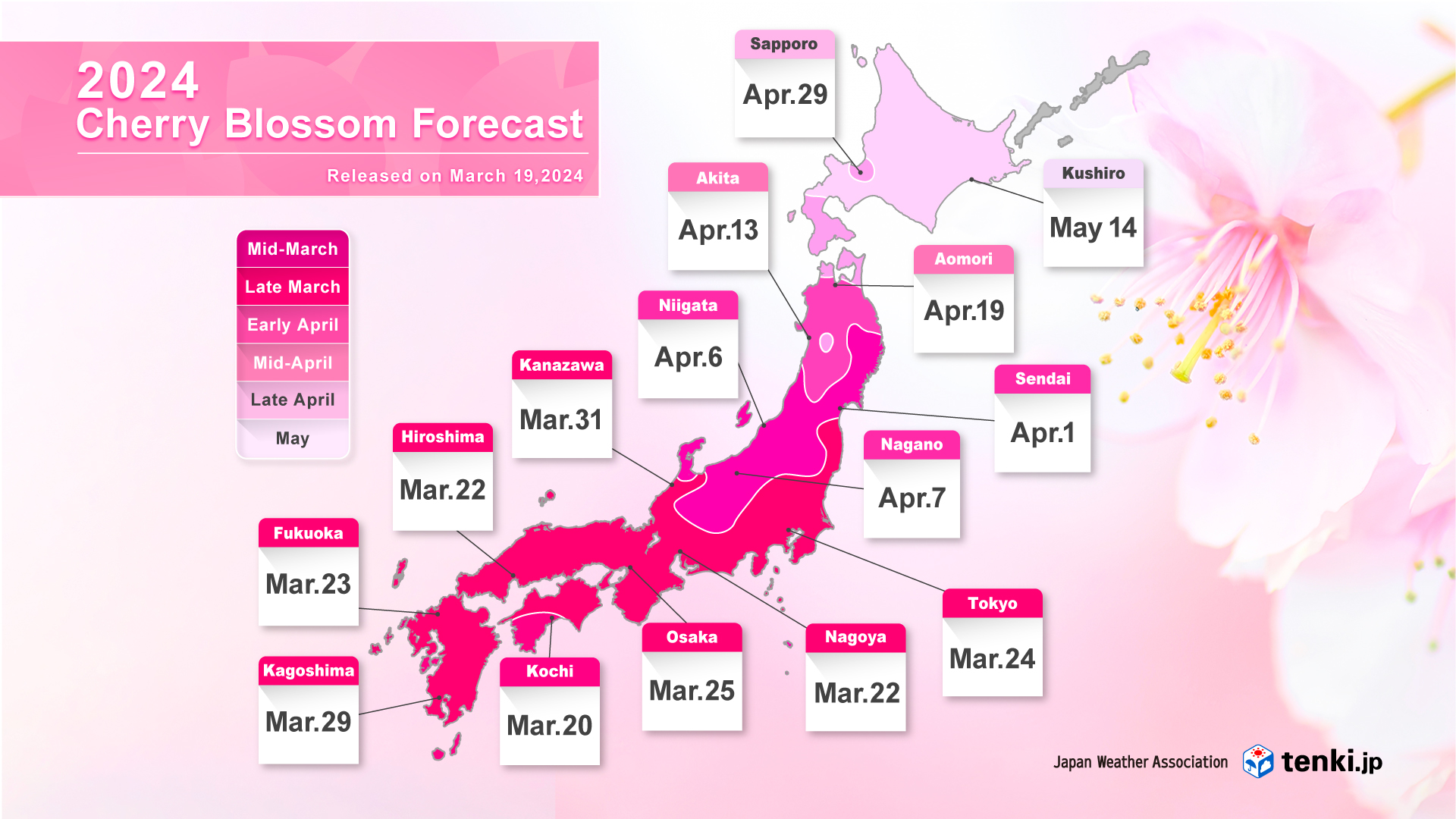
Bloom Forecast Dates (Major Locations)
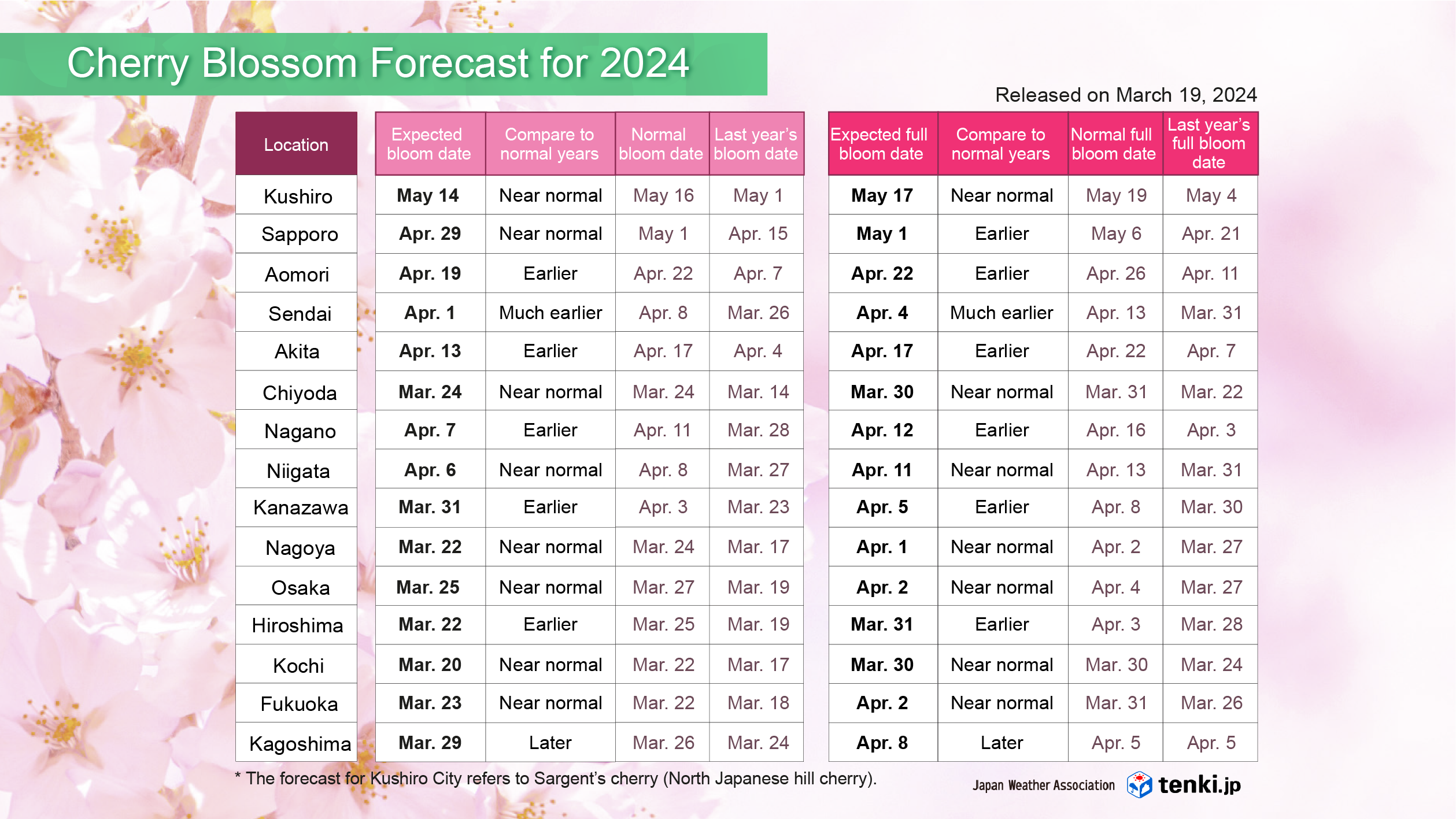
The Appearance of Cherry Blossom Buds
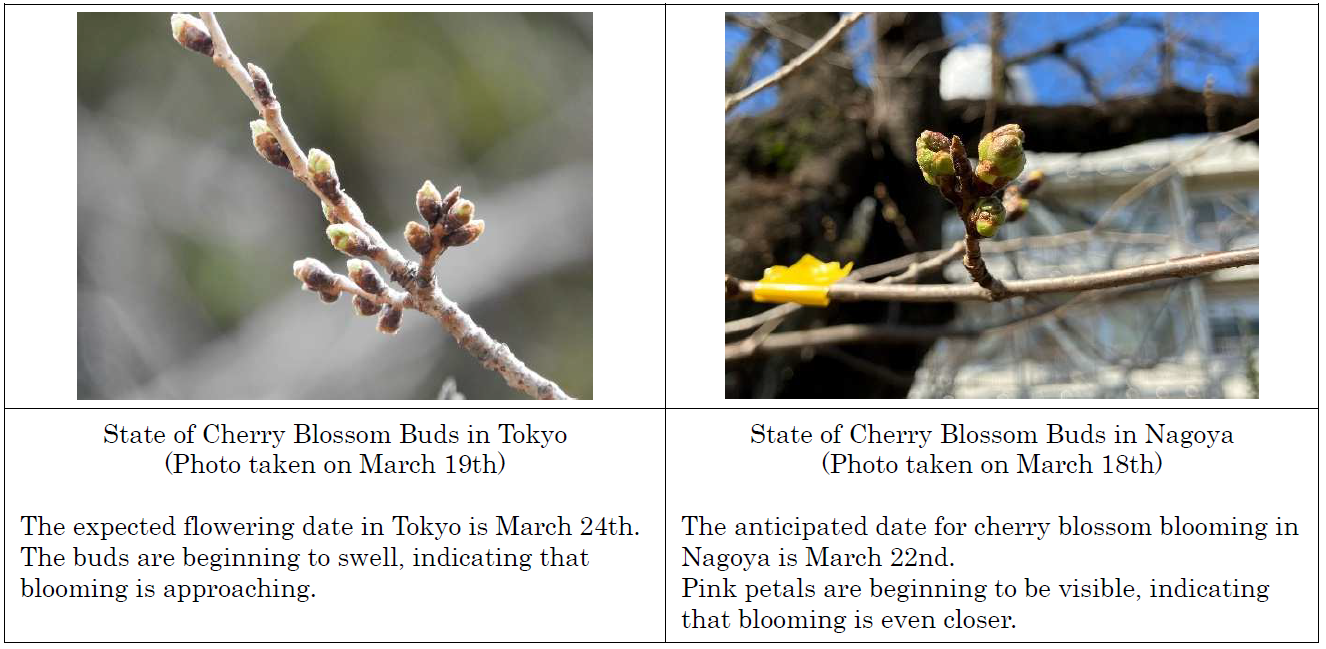
The cherry blossom and full bloom forecast for all 83 locations is available on tenki.jp, a weather forecast media site below operated by JWA.
https://tenki.jp/sakura/expectation/
Cherry Blossom Forecast
For more detailed information about JWA’s Cherry Blossom Forecast, please find the link below.
https://www.jwa.or.jp/english/service/seasonal-news-cherry-blossom-forecast/
【Description of words】
Normal: Average of 1991-2020
Much earlier: 7 or more days earlier than normal
Earlier: 3 to 6 days earlier than normal
Near normal: 1 or 2 days earlier or later than normal
Later: 3 to 6 days later than normal
Much later: 7 or more days later than normal
Originally released in Japanese: 2024/3/13
Reference material
Frequently asked questions regarding cherry blossom forecast
Q1: What are the criteria for the flowering and full bloom dates?
A1: The criteria are the same as those used by Japan Meteorological Agency. The flowering period starts the first day when 5 to 6 or more flowers have started to bloom on the designated observation tree (i.e. sample trees), and the full bloom date is the first day when more than 80% of the buds have opened on the sample trees.
Q2: How many locations are expected?
A2: We announced forecasts for 83 locations nationwide. The forecast locations consist of 53 sample trees observed by each local meteorological observatory and 30 locations where observation data are obtained from cooperating agencies such as municipalities/local governments and parks.
Q3: What are the methods and characteristics of the Japan Weather Association’s cherry blossom forecast?
A3: We use our proprietary forecasting model that focuses on the temperature trends from autumn onwards, which significantly influence the growth process of cherry buds. Our forecasts are based on accurate observation data from sample trees at local meteorological observatories and cooperating agencies, emphasizing meteorological principles. Japan Meteorological Association has been conducting cherry blossom forecasts since 2007, making this year the 18th year of our endeavor.
Q4: What data are used for forecasting cherry blossoms?
A4: The following data are used.
- Temperature observation data from the previous autumn to the forecast date
- Temperature forecast data from the forecast date to the blooming period (from Japan Weather Association’s point forecasts and long-term forecasts).
The temperature from the previous autumn to spring significantly influences the cherry blossoming period. Cherry buds form during the previous summer and then enter dormancy. Exposure to a certain period of low temperatures during winter breaks this dormancy, and the buds grow and bloom with rising temperatures. It is believed that higher temperatures promote faster bud growth and earlier blooming.
PDF DOWNLOAD:Cherry Blossom and Full Bloom Forecast for 2024 (Part 3)
